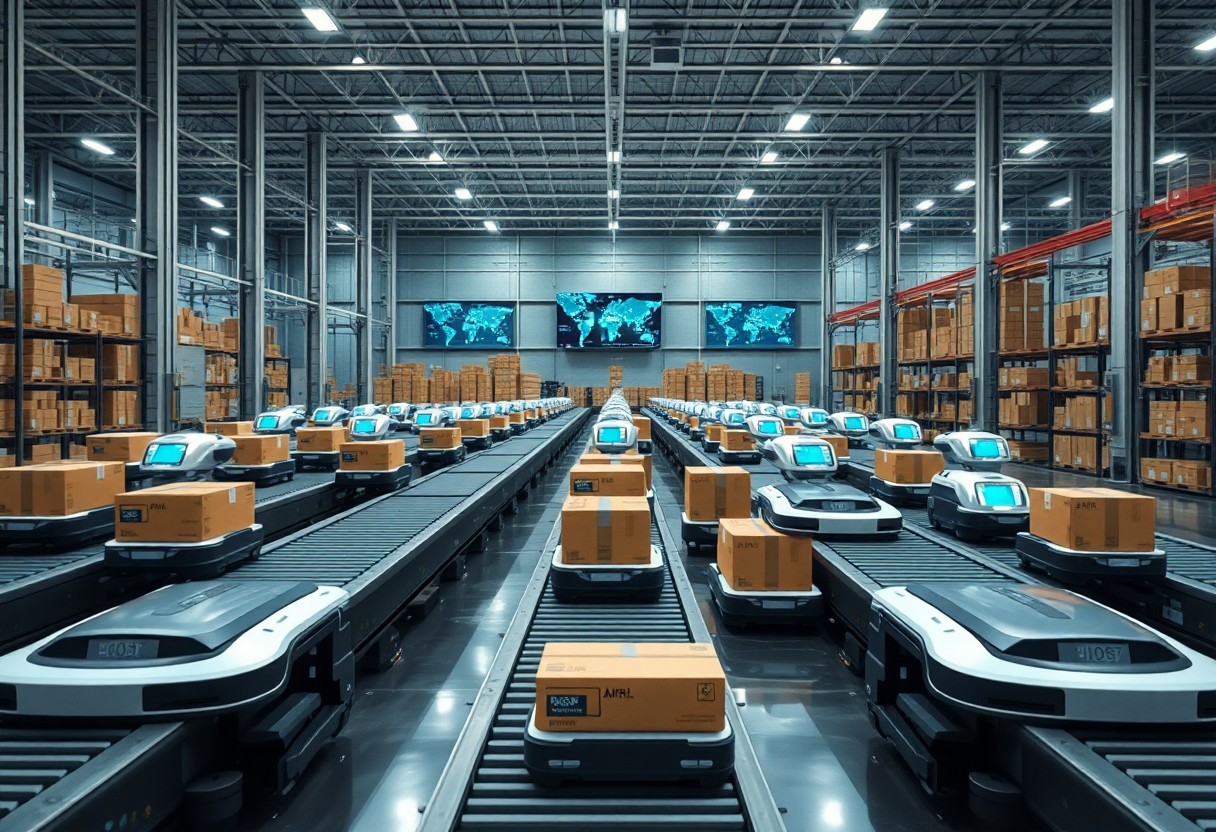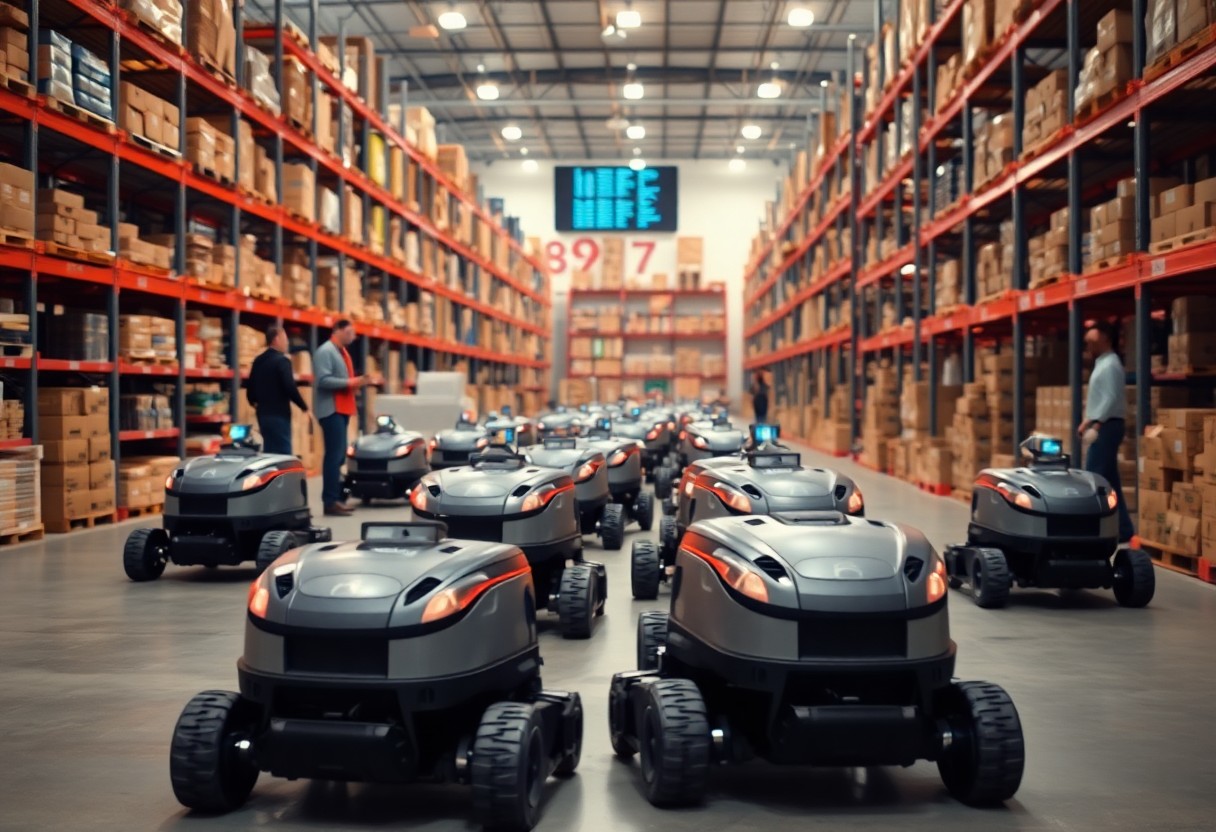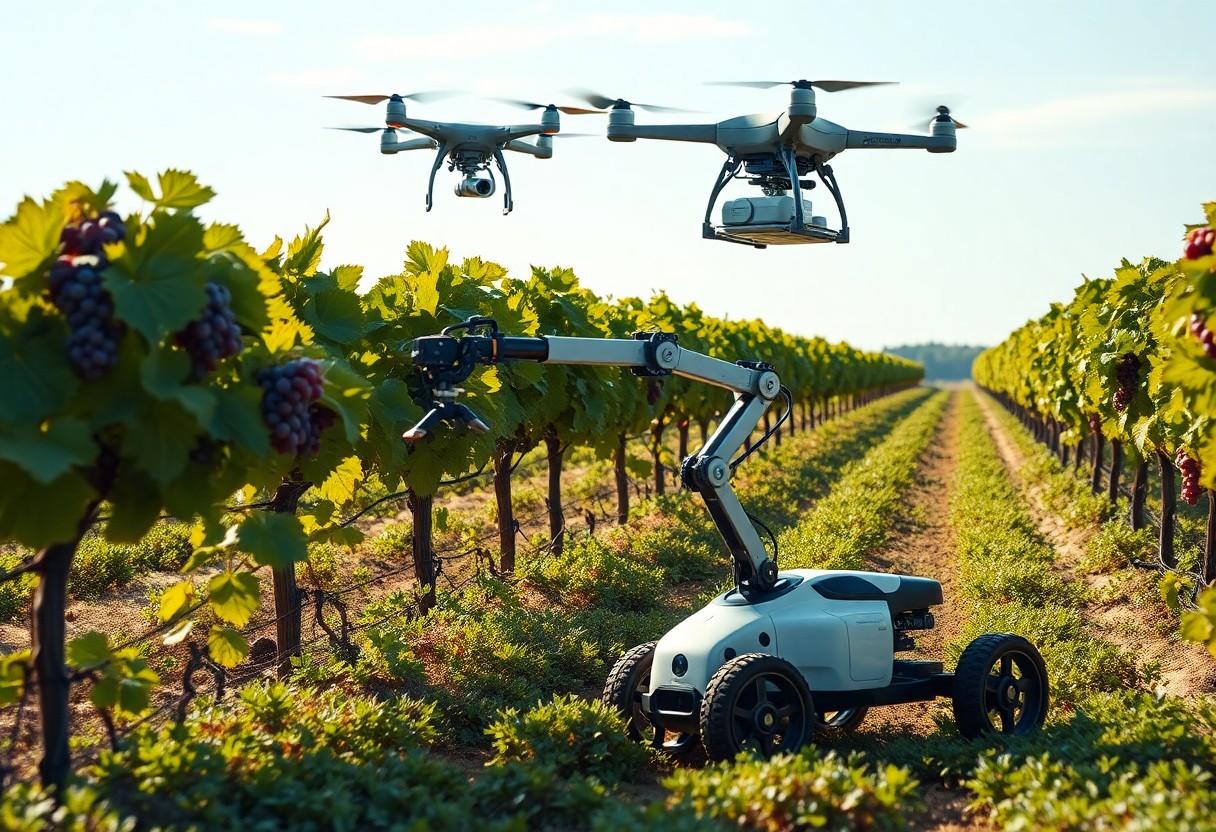Logistics is undergoing a transformative change as autonomous mobile robots (AMRs) redefine operational efficiency and effectiveness. You are witnessing a shift towards smart logistics solutions that integrate advanced technology, enhancing productivity and optimizing workflows. By adopting AMRs, you can streamline your supply chain, reduce labor costs, and improve service delivery times, making your operations more competitive in today’s fast-paced market. Understanding the rise of AMRs is imperative for staying ahead in the future of autonomous mobility.
Understanding Autonomous Mobile Robots (AMRs)
Your understanding of autonomous mobile robots (AMRs) is important to grasp their impact on logistics. These innovative machines autonomously navigate various environments, optimizing operations by performing tasks such as picking, sorting, and transporting goods. As manufacturers and warehouses implement AMRs to enhance efficiency, they fundamentally reshape traditional workflows and drive operational excellence.
Definition and Types of AMRs
AMRs are robotic systems designed to move materials within a facility without direct human intervention. They use sophisticated sensors and software to navigate their environment, ensuring safety and efficiency. Different types include:
- Automated Guided Vehicles (AGVs) – follow predefined paths
- Vision-guided AMRs – utilize cameras and computer vision
- Laser-guided AMRs – rely on laser scanners for navigation
- Collaborative AMRs – work alongside human operators
- Specialized AMRs – tailored for specific tasks or industries
Knowing the types and functionalities of AMRs can assist organizations in selecting the right robotic solutions for their unique logistical challenges.
| Type | Description |
| Automated Guided Vehicles (AGVs) | Robots that follow fixed paths to transport materials. |
| Vision-guided AMRs | Robots equipped with cameras to navigate dynamically. |
| Laser-guided AMRs | Devices that map their environment using lasers. |
| Collaborative AMRs | Machines designed to work alongside human workers. |
| Specialized AMRs | Robots tailored for specific industrial applications. |
Key Technologies Enabling AMRs
Several key technologies are driving the advancement of AMRs, making their operation more efficient and reliable. These technologies encompass navigation systems, machine learning, and sensor integration, each contributing to the safe and effective movement of robots in complex environments.
Advanced navigation systems allow AMRs to understand and interpret their surroundings. These systems often combine GPS, LIDAR, and computer vision to create detailed maps and enable real-time obstacle avoidance. Machine learning algorithms continuously improve AMR performance by analyzing operational data, enhancing path optimization and decision-making. Additionally, sensor integration ensures accurate environmental sensing, allowing AMRs to collaborate seamlessly with human workers and other machines. With these technologies, AMRs are revolutionizing logistics and manufacturing processes, driving increased efficiency and safety in operations.
The Evolution of Smart Logistics
The rapid evolution of smart logistics is largely driven by the integration of technology, specifically through the use of Automated Guided Vehicles (AGVs) and AMRs: Redefining …. As industries have sought efficiency, logistics has transformed from manual operations to highly automated systems, allowing for real-time data analysis and improved supply chain visibility.
Historical Context
Current Trends in Logistics Automation
Applications of AMRs in Logistics
In logistics, autonomous mobile robots (AMRs) are revolutionizing operations across various domains. With their ability to navigate complex environments autonomously, they streamline processes such as inventory management, order fulfillment, and transportation. AMRs can adapt to different tasks, enhancing efficiency and reducing operational costs while significantly improving service levels in warehouses, distribution centers, and urban environments.
Warehousing Solutions
In warehousing, AMRs enable seamless movement of goods, optimizing space utilization and reducing manual labor. Equipped with sensors and advanced algorithms, these robots can navigate aisles, pick items, and transport them to designated areas. According to a 2023 study, facilities utilizing AMRs experienced up to a 30% increase in operational efficiency, allowing for faster order processing and improved inventory accuracy.
Last-Mile Delivery
Last-mile delivery stands as a critical application for AMRs, addressing the challenges of urban logistics and consumer expectations. With their compact design and agility, these robots can access confined spaces and navigate pedestrian areas, significantly cutting down delivery times. As e-commerce continues to surge, companies have begun deploying AMRs to streamline this final leg, enhancing customer satisfaction and reducing delivery costs.
Last-mile delivery continues to evolve, with AMRs increasingly recognized for their potential to transform urban logistics. Many companies are piloting AMR solutions to facilitate on-demand deliveries, allowing customers to receive products within hours of placing an order. For instance, in cities like San Francisco, partnerships between tech startups and retail giants have led to successful trial runs using AMRs for delivering groceries and consumer goods. These initiatives, which often leverage real-time traffic data and machine learning, promise not only to make last-mile delivery more efficient but also environmentally sustainable by reducing the number of delivery vehicles on the road.

Benefits of Implementing AMRs
Implementing Autonomous Mobile Robots (AMRs) brings numerous advantages that redefine operational excellence in logistics. These intelligent machines streamline workflows, reduce labor costs, and enhance productivity, allowing your organization to focus on higher value tasks. Real-time data and navigation capabilities optimize routing, minimizing delays and improving service delivery. As you embrace AMRs, you position your operations at the forefront of innovation.
Efficiency and Cost Reduction
By integrating AMRs into your logistics operations, you can significantly boost efficiency and lower costs. These robots operate 24/7 without breaks, maximizing throughput and reducing the need for extensive labor. Studies show that companies employing AMRs can reduce operational costs by up to 20% while increasing order fulfillment rates, resulting in improved profit margins and a competitive edge in the market.
Enhanced Safety and Reliability
AMRs greatly enhance safety and reliability within your logistics environment. Equipped with advanced sensors and AI technology, these robots can navigate complex spaces without causing disruptions or accidents. Their ability to eliminate manual labor reduces the risk of workplace injuries, while continuous operation ensures consistent performance. Utilizing AMRs can lead to up to a 50% drop in safety incidents on site, instilling confidence in your workforce and stakeholders alike.
As AMRs operate alongside human teams, their reliability becomes apparent. They systematically execute repetitive tasks, allowing your employees to concentrate on strategic, value-adding responsibilities. Moreover, AMRs feature real-time monitoring capabilities, enabling predictive maintenance that minimizes downtime. The result is a seamless transition of tasks between robots and humans, ensuring that your logistics operations maintain a high standard of safety and efficiency.
Challenges and Barriers to Adoption
Despite the promising potential of Autonomous Mobile Robots (AMRs) in logistics, several challenges hinder widespread adoption. Technical limitations, regulatory and infrastructure issues, and economic concerns present significant barriers that organizations must navigate to fully leverage AMR technology.
Technical Limitations
AMRs face numerous technical challenges, including navigation in complex environments, real-time data processing, and maintaining safety standards. For instance, while recent advancements in LIDAR and computer vision have improved navigation capabilities, you may encounter limitations when operating in unpredictable settings or under adverse weather conditions.
Regulatory and Infrastructure Issues
Navigating the regulatory landscape can be daunting for AMR deployment. Compliance with safety regulations and adapting existing warehouse or transport systems to accommodate AMRs often prolongs the adoption process.
For AMRs to operate effectively, significant updates to infrastructure might be necessary. This could include installing new charging stations, redesigning warehouse layouts for smooth navigation, or even modifying docking systems for integration with existing supply chains. Regulations can vary widely by region, meaning you need to invest time and resources into understanding local laws and standards. Organizations like the ISO are actively working on guidelines, yet many regions still lack clear frameworks, potentially delaying the widespread implementation of AMR technologies.
Future Prospects for AMRs in the Logistics Sector
The future of Autonomous Mobile Robots (AMRs) in the logistics sector is poised for unprecedented growth, driven by advancements in technology and increasing demand for efficient warehouse solutions. As companies seek to enhance operational efficiency, AMRs will play a vital role in streamlining processes, reducing labor costs, and improving overall productivity levels. Collaborative systems integrating AMRs with existing warehouse management systems will be key in realizing their full potential.
Innovations on the Horizon
Innovation is at the heart of AMR development, with upcoming advancements in artificial intelligence and machine learning enabling robots to navigate complex environments with enhanced precision. These technologies will allow AMRs to recognize and adapt to real-time challenges, such as dynamic task changes and staff interactions, increasing their overall utility in logistics operations.
Projected Market Growth
The market for AMRs is expected to expand significantly, with a compound annual growth rate (CAGR) projected to exceed 25% by 2025. This surge reflects not only the increasing acceptance of automation in warehouses but also growing investments in robotics technology by major logistics firms striving for efficiency and competitive advantage.
According to a report from a leading market research firm, the AMR market is anticipated to reach over $30 billion within the next few years. Factors fueling this growth include the rising demand for fast e-commerce fulfillment, the need for cost-reduction strategies, and ongoing innovations in robotics and automation. As companies increasingly adopt AMRs for material handling, sorting, and delivery tasks, the sector will see an influx of new players and technologies, further enriching the landscape for smart logistics solutions.
Final Words
From above, you can see that the rise of Autonomous Mobile Robots (AMRs) is transforming logistics and mobility in profound ways. Embracing these technologies can enhance your operational efficiency, reduce costs, and improve safety within your supply chain. As you integrate smart logistics solutions, keep an eye on the continuous advancements in automation and connectivity that will shape the future of your industry. By adapting to these emerging trends, you position your organization to lead in a rapidly changing landscape where smart mobility is not just an option but an vital component of success.







